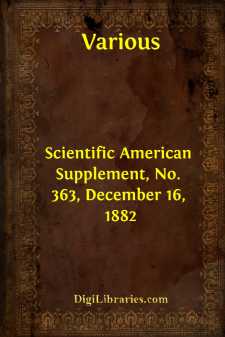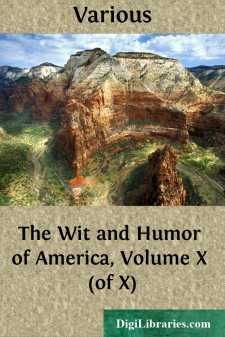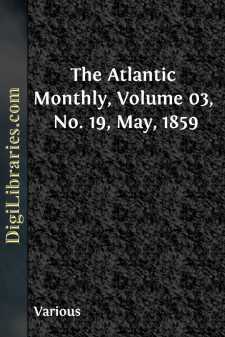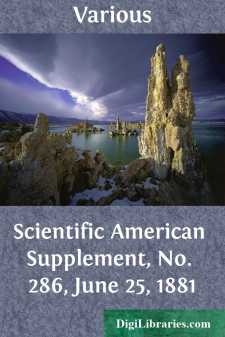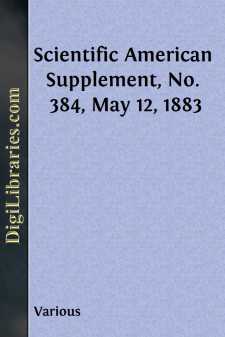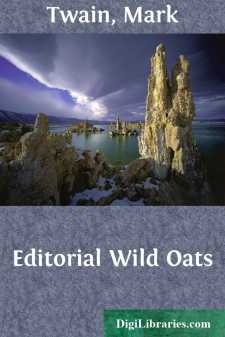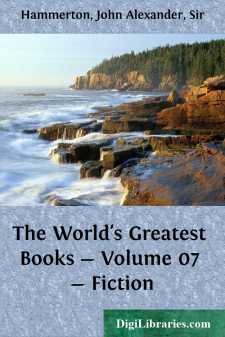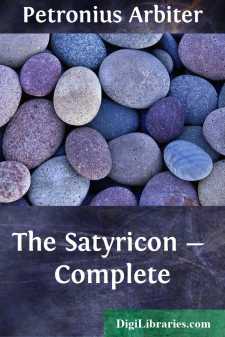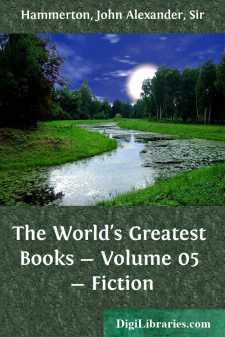Categories
- Antiques & Collectibles 13
- Architecture 36
- Art 48
- Bibles 22
- Biography & Autobiography 813
- Body, Mind & Spirit 141
- Business & Economics 28
- Children's Books 12
- Children's Fiction 9
- Computers 4
- Cooking 94
- Crafts & Hobbies 4
- Drama 346
- Education 46
- Family & Relationships 57
- Fiction 11826
- Games 19
- Gardening 17
- Health & Fitness 34
- History 1377
- House & Home 1
- Humor 147
- Juvenile Fiction 1873
- Juvenile Nonfiction 202
- Language Arts & Disciplines 88
- Law 16
- Literary Collections 686
- Literary Criticism 179
- Mathematics 13
- Medical 41
- Music 40
- Nature 179
- Non-Classifiable 1768
- Performing Arts 7
- Periodicals 1453
- Philosophy 64
- Photography 2
- Poetry 896
- Political Science 203
- Psychology 42
- Reference 154
- Religion 513
- Science 126
- Self-Help 83
- Social Science 81
- Sports & Recreation 34
- Study Aids 3
- Technology & Engineering 59
- Transportation 23
- Travel 463
- True Crime 29
Scientific American, Volume XXIV., No. 12, March 18, 1871 A Weekly Journal of Practical Information, Art, Science, Mechanics, Chemistry, and Manufactures.
by: Various
Categories:
Description:
Excerpt
There has recently been a most interesting discussion at the Literary and Philosophical Society, Manchester, on the above subject.
The paper which gave rise to the discussion was by Mr. Brockbank, who detailed many experiments, and ended by stating his opinion that iron does become much weaker, both in its cast and wrought states, under the influence of low temperature; but Mr. Brockbank's paper was immediately followed by others by Sir W. Fairbairn, Dr. Joule, and Mr. Spence, which at once put an entirely new complexion on the matter.
Dr. Joule says:
"As is usual in a severe frost, we have recently heard of many severe accidents consequent upon the fracture of the tires of the wheels of railway carriages. The common-sense explanation of these accidents is, that the ground being harder than usual, the metal with which it is brought into contact is more severely tried than in ordinary circumstances. In order apparently to excuse certain railway companies, a pretence has been set up that iron and steel become brittle at a low temperature. This pretence, although put forth in defiance, not only of all we know, of the properties of materials, but also of the experience of everyday life, has yet obtained the credence of so many people that I thought it would be useful to make the following simple experiments:
"1st. A freezing mixture of salt and snow was placed on a table. Wires of steel and of iron were stretched, so that a part of them was in contact with the freezing mixture and another part out of it. In every case I tried the wire broke outside of the mixture, showing that it was weaker at 50° F., than at about 12° F.
"2d. I took twelve darning needles of good quality, 3 in. long, ⁄24 in. thick. The ends of these were placed against steel props, 2ââ¦âº in. asunder. In making an experiment, a wire was fastened to the middle of a needle, the other end being attached to a spring weighing-machine. This was then pulled until the needle gave way. Six of the needles, taken at random, were tried at a temperature of 55° F., and the remaining six in a freezing mixture which brought down their temperature to 12° F. The results were as follow:—
Warm Needles.Cold Needles.64ouncesbrokeouncesbroke65""64""""72""62""60"bent44""68"broke60"bent40""————Average,58ââ¦âAverage,59⁄6"I did not notice any perceptible difference in the perfection of elasticity in the two sets of needles. The result, as far as it goes, is in favor of the cold metal.
"3d. The above are doubtless decisive of the question at issue. But as it might be alleged that the violence to which a railway wheel is subjected is more akin to a blow than a steady pull; and as, moreover, the pretended brittleness is attributed more to cast iron than any other description of the metal, I have made yet another kind of experiment. I got a quantity of cast iron garden nails, an inch and a quarter long and ââ¦âº in. thick in the middle. These I weighed, and selected such as were nearly of the same weight. I then arranged matters so that by removing a prop I could cause the blunt edge of a steel chisel weighted to 4lb....



